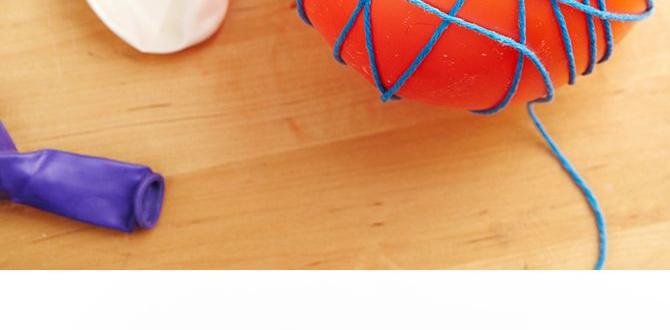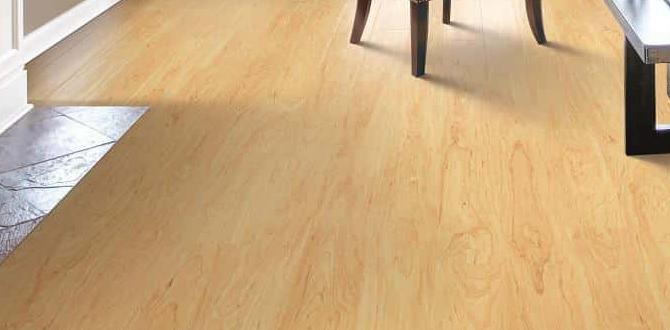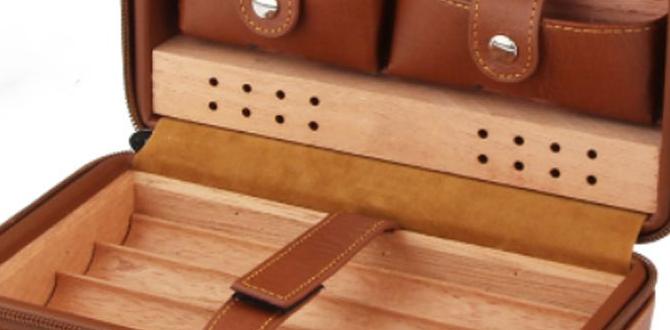Choosing the best cordless brad nailer is simple! Look for power, battery life, nail size capacity, weight, and ease of use. This guide breaks down everything you need to know to make the perfect choice for your DIY projects.
Hey there, fellow woodworkers and DIY enthusiasts! Jack Shaffer here, your go-to guy for all things nailers. Ever stared at a pile of trim, baseboards, or intricate woodworking pieces and thought, “There’s got to be an easier way to fasten this?” You’re not alone! That’s where the magic of a cordless brad nailer comes in. Taming those flying wires associated with pneumatic setups is a game-changer. But with so many options out there, picking the right cordless brad nailer can feel like navigating a lumberyard blindfolded. Don’t worry, we’re going to break it down, step by step. Get ready to find the perfect cordless companion for your projects!
Table of Contents
Why a Cordless Brad Nailer is Your New Best Friend
Imagine this: you’re halfway through installing a beautiful picture frame, or maybe you’re adding some decorative molding to your living room. You reach for your nailer, but then you’re wrestling with an air hose, a compressor, and a power cord. It snags, it gets in the way, and it just slows you down. A cordless brad nailer liberates you from that hassle. It’s a self-contained unit, powered by a battery, ready to go wherever your creativity takes you. This freedom means more efficiency, less frustration, and ultimately, better results for your projects.
Understanding Cordless Brad Nailer Types
Before we dive into how to choose, let’s quickly touch on the two main types of cordless brad nailers you’ll encounter. This will help you understand the technology behind them.
Battery-Powered (18V/20V Max)
These are the most common and user-friendly cordless brad nailers. They use rechargeable lithium-ion batteries, similar to those found in many power drills. Brands like DeWalt, Milwaukee, Ryobi, and Makita all offer excellent 18V or 20V Max cordless brad nailers. They offer a great balance of power, portability, and run-time.
Fuel Cell Powered
Less common for brad nailers specifically, but worth mentioning. These tools use a small disposable fuel cell (gas cartridge) and a battery to ignite the fuel, driving the nail. While powerful, they can be more expensive to operate due to the cost of fuel cells and may have a slight smell. For most DIY home use, battery-powered is the way to go.
Key Factors When Choosing Your Cordless Brad Nailer
Alright, let’s get down to business. Picking the right tool is all about matching its features to your needs. Here are the essential factors to consider:
1. Power Source: Battery Voltage and Capacity
The heart of your cordless brad nailer is its battery. For most home DIYers and hobbyists, an 18V or 20V Max system will be more than sufficient. These batteries offer a good balance of power for driving brads into common woods and respectable run-time on a single charge.
- Voltage (V): Higher voltage generally means more power. 18V or 20V Max is standard and ideal for most tasks.
- Amp-hour (Ah) Rating: This tells you how long the battery can supply power. A higher Ah rating means longer run-time. For occasional use, 2.0 Ah might be fine. For more frequent or extended projects, consider 4.0 Ah or higher.
- Battery Compatibility: If you already own tools from a particular brand (like DeWalt, Milwaukee, or Ryobi), check if the brad nailer uses the same battery system. This can save you a lot of money!
2. Nail Size Capacity and Type
Brad nailers fire thin nails, perfect for trim work, molding, and delicate projects where you don’t want large, noticeable holes. It’s crucial to know the range of nail sizes the nailer can handle.
- Nail Gauge: Brad nails come in different gauges (thicknesses). A 16-gauge brad nailer is the most popular and versatile for general trim work. 18-gauge brad nailers fire even thinner nails, leaving smaller holes, great for delicate crafts or very thin trim.
- Nail Length: Most brad nailers can handle nails from about 3/4 inch up to 2 inches. Make sure the nailer’s maximum length meets the needs of your typical projects. For example, if you’re installing thicker baseboards, a longer nail capacity is essential.
- Nail COLLATION: This refers to how the nails are held together in the magazine. Most brad nailers use straight strips of nails. Ensure you can easily find and load the correct type of nails.
3. Firing Modes: Sequential vs. Contact Actuation
This feature dictates how the nailer fires. Understanding these modes will significantly impact your speed and accuracy.
- Sequential Mode (Single Shot): This is the safer mode. You must press the nose of the nailer against the workpiece and pull the trigger to drive a nail. This prevents accidental firing and is ideal for precision work where each nail placement is critical.
- Contact Actuation Mode (Bump Fire): In this mode, you pull the trigger once, and then the nailer will fire a nail every time you press the nose against the workpiece. This is much faster for repetitive tasks like installing long runs of trim, but requires more practice to use safely and accurately.
- Tool-Free Mode Selector: The best cordless brad nailers have an easy-to-use switch to change between these modes.
Safety Tip: Always use sequential mode when working near edges, corners, or when you need exact nail placement. When using contact actuation, be mindful of where you’re pointing the tool!
4. Weight and Ergonomics
You’ll be holding this tool for extended periods, so comfort and balance are key. A heavy or poorly balanced nailer can lead to fatigue and less precise work.
- Weight: Consider the weight of the nailer with the battery installed. Lighter is generally better for maneuverability and reducing strain, especially when working overhead or at awkward angles.
- Grip: A rubberized, ergonomic grip will provide comfort and reduce vibrations.
- Balance: Hold the tool as if you were using it. Does it feel well-balanced in your hand?
5. Depth Adjustment and Jam Clearance
These features can save you a lot of frustration.
- Depth Adjustment Dial: This allows you to control how deep the nail drives into the material. You’ll want to be able to set it so brads are flush with the surface or slightly countersunk, depending on your needs. Tool-free adjustment is a huge plus.
- Tool-Free Jam Clearance: Jams happen, even with the best tools. A nailer that allows you to clear jams quickly and easily without needing separate tools (like Allen wrenches) will get you back to work much faster.
6. LED Lights and Indicators
Modern cordless nailers often come with helpful features:
- LED Work Light: An integrated LED light can illuminate your work area, especially useful in dimly lit spaces or when working at odd angles.
- Battery Indicator: A clear display showing the remaining battery charge is a lifesaver, preventing you from running out of power mid-project.
- Nail Indicator: Some models show you when you’re low on nails, so you don’t accidentally dry fire.
Top Cordless Brad Nailer Features to Look For (and Why They Matter)
Let’s break down what makes a cordless brad nailer truly shine for DIYers. These are the features that often separate good tools from great ones.
1. Consistent Firing Power
The absolute most important thing is that the nailer drives nails consistently and effectively into the intended material. A nailer that struggles to sink a brad fully into common pine or oak will be a constant source of frustration. Look for models known for their power and reliability. Read reviews focusing on how well they perform in various wood types.
2. Reliable Battery Performance
You want a battery that lasts through a good chunk of your project and recharges reasonably quickly. If you’re just doing a small weekend project, a single battery might be fine. For larger jobs or if you plan to use it often, consider getting a kit with two batteries so you always have a fresh one ready to go.
For more information on battery technology and best practices, check out this resource on Energy Efficiency in Your Home from the U.S. Department of Energy. While not specific to nailer batteries, it provides general context on battery efficiency.
3. Ease of Loading Nails
Loading the nail magazine should be straightforward. Most use a spring-loaded mechanism. You should be able to easily slide the nail strip in and re-engage the spring without a struggle. Some offer tool-free access for quick reloads.
4. Minimal Misfires and Jams
While all nailers can jam occasionally, the best ones do so infrequently. Brands known for their engineering and quality control tend to have fewer issues. Look for models that also feature tool-free jam clearing, as mentioned earlier.
5. Comfortable Handling Over Time
As we touched on with ergonomics, a tool that just feels right in your hand is crucial. The weight distribution, grip texture, and overall balance make a big difference when you’re working on a project that takes several hours. Try to hold one in a store if possible, or pay close attention to mentions of comfort in online reviews.
Cordless Brad Nailer Comparison Table (Top Picks for Homeowners)
To help you visualize, here’s a look at some popular and well-regarded cordless brad nailers that are excellent choices for home DIYers. Keep in mind that models and specific features can change, so always check the latest specifications!
| Feature | DeWalt 20V MAX XR Brushless Brad Nailer (DCN680) | Milwaukee M12 FUEL 18-Gauge Brad Nailer (2540-20) | Ryobi ONE+ HP Brushless 18V Compact Brad Nailer (P3200A) | Makita 18V LXT Cordless Brad Nailer (AF501Z) |
|---|---|---|---|---|
| Gauge | 18 Gauge | 18 Gauge | 18 Gauge | 18 Gauge |
| Nail Length | 5/8″ – 2″ | 5/8″ – 2-1/8″ | 3/4″ -?” (Check specs for exact max) | 5/8″ – 2-1/8″ |
| Battery System | 20V MAX XR | M12 | ONE+ (18V) | 18V LXT |
| Weight (Tool Only) | Approx. 6.1 lbs | Approx. 3.5 lbs (with M12 battery) | Approx. 4.5 lbs (with battery) | Approx. 7.4 lbs (with battery) |
| Firing Modes | Sequential & Contact | Sequential & Contact | Sequential & Contact | Sequential & Contact |
| Key Benefit | Excellent power, part of a vast battery system | Very compact and lightweight, fast firing | Great value, wide range of affordable batteries | Powerful, durable, reputable brand |
| Consideration | Can be a bit heavier with larger batteries | M12 system is good for lighter tools, check if sufficient power for your wood | Check nail length specifications carefully | Heavier weight, but powerful |
Note: All specifications are approximate and subject to change. Always verify the latest details on the manufacturer’s website.
How to Use a Cordless Brad Nailer Safely
Safety is paramount when working with any power tool, and a nailer is no exception. Treat it with respect!
- Wear Safety Glasses: This is non-negotiable. Always wear ANSI-approved safety glasses or goggles to protect your eyes from flying debris or accidental nail discharge.
- Understand the Firing Modes: Before you start, ensure you know which mode your nailer is in and how it operates. Only use contact actuation when you intend to fire a nail.
- Never Point the Nailer at Yourself or Others: Even when the battery is out, a loaded nailer can be dangerous. Treat it like a loaded firearm.
- Keep Fingers Away from the Trigger and Nose: Keep your fingers off the trigger unless you are actively firing a nail. Keep your hands and body parts away from the muzzle.
- Ensure Workpiece is Stable: Make sure what you are nailing is secure. A shifting workpiece can cause the nail to go off-course.
- Use the Correct Nails: Always use the gauge and length of brads recommended for your specific nailer. Incorrect nails can cause jams or damage the tool.
- Store Properly: When not in use, remove the battery and store the nailer in a safe, dry place, out of reach of children.
- Read the Manual: Seriously, take a few minutes to read your tool’s manual. It contains specific safety instructions and operating details for your model. You can often find these manuals online on the manufacturer’s website. For example, resources on tool safety can be found via OSHA (Occupational Safety and Health Administration) guidelines for tools and equipment.
Beyond the Purchase: Accessories and Maintenance
Once you’ve chosen your cordless brad nailer, a few accessories and a bit of maintenance can ensure it serves you well for years.
Essential Accessories:
- Extra Batteries: As mentioned, having one or two spare batteries can be a lifesaver for longer projects.
- Charger: Ensure you have the correct charger for your chosen battery system.
- Nails: Stock up on various lengths of the correct gauge brads. It’s often cheaper to buy them in bulk.
- Carrying Case: Most nailers come with one, but if yours didn’t, consider a soft bag or a hard case to protect your tool during transport and storage.
Basic Maintenance:
- Clean the Tool: Periodically wipe down the exterior of your nailer with a damp cloth. Keep the air vents clear of dust and debris.
- Lubricate (if applicable): Some older models or specific designs might require occasional lubrication. Check your manual for specifics. Modern battery-powered nailers are often oil-free for less maintenance.
- Check the Magazine: Ensure the nail feeding mechanism is clean and free of any lodged debris.
- Battery Care: Store batteries in a cool, dry place and avoid leaving them fully discharged for long periods.
FAQs About Choosing a Cordless Brad Nailer
Let’s tackle some common questions beginners have when looking for their first cordless brad nailer.
Q1: What is the difference between a brad nailer and a finish nailer?
A brad nailer fires thinner “brads” through a very narrow nozzle, leaving a tiny hole that’s easy to conceal. A finish nailer fires slightly thicker “finish nails” (typically 15 or 16 gauge) with a wider head, leaving a more noticeable, but still manageable, hole. Brad nailers are for delicate trim, molding, crafts, and cabinetry, while finish nailers are generally used for slightly heavier trim work and molding where strength is a bit more important and filling the nail hole is acceptable.
Q2: Can I use a cordless brad nailer for all my trim projects?
For most typical home trim projects like baseboards, crown molding, and window casing, a good cordless brad nailer (especially an 18-gauge) is perfect. If you’re working with very heavy hardwoods or installing structural elements, you might need a more robust nailer (like a framing nailer), but for decorative and finishing tasks, a brad nailer is ideal.
Q3: How many nails can I expect to drive on a single battery charge?
This varies greatly by nailer, battery capacity (Ah), and the type of work you’re doing. A good 2.0 Ah or 3.0 Ah battery on a modern cordless brad nailer can typically drive anywhere from 500 to over 1000 nails on a single charge. For most weekend DIY jobs, one fully charged battery will get you through without issue.



